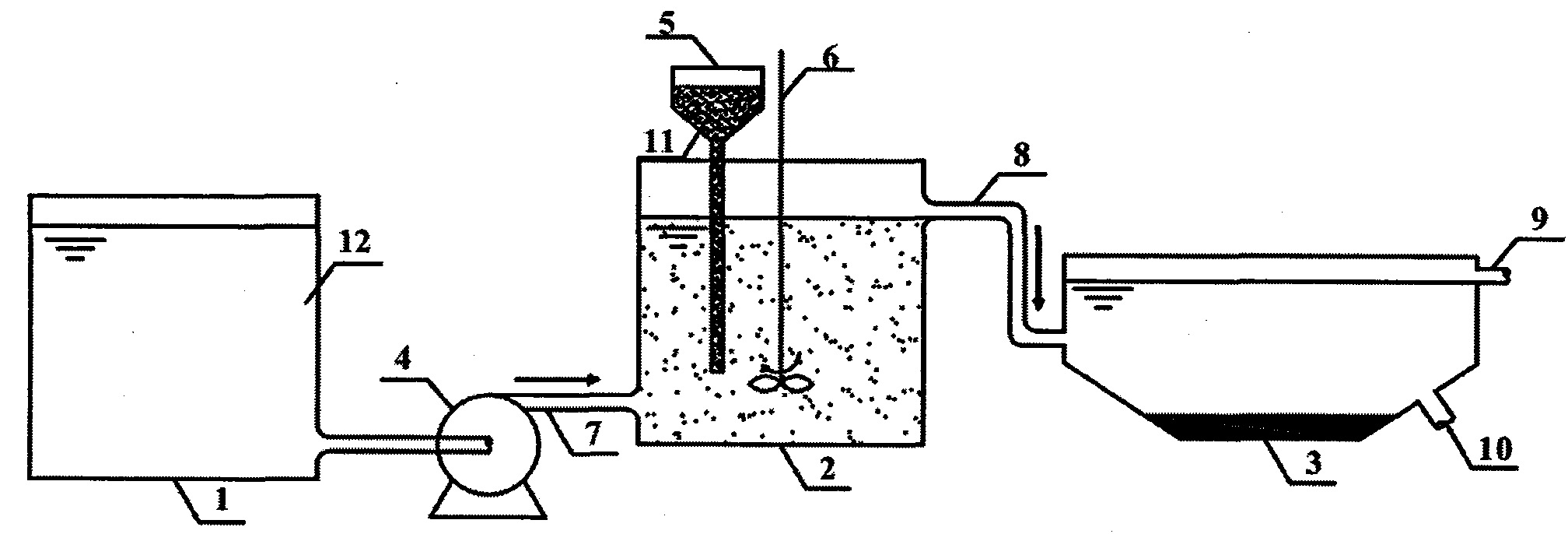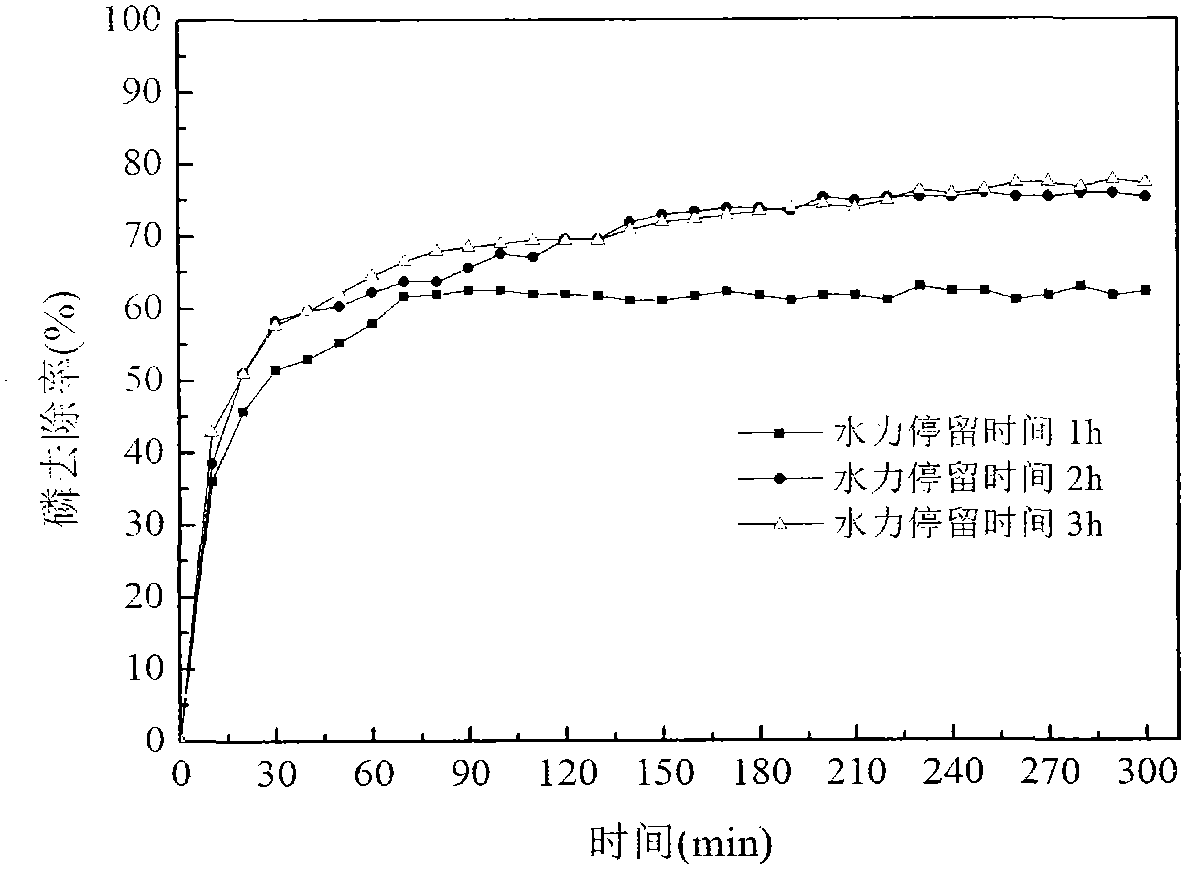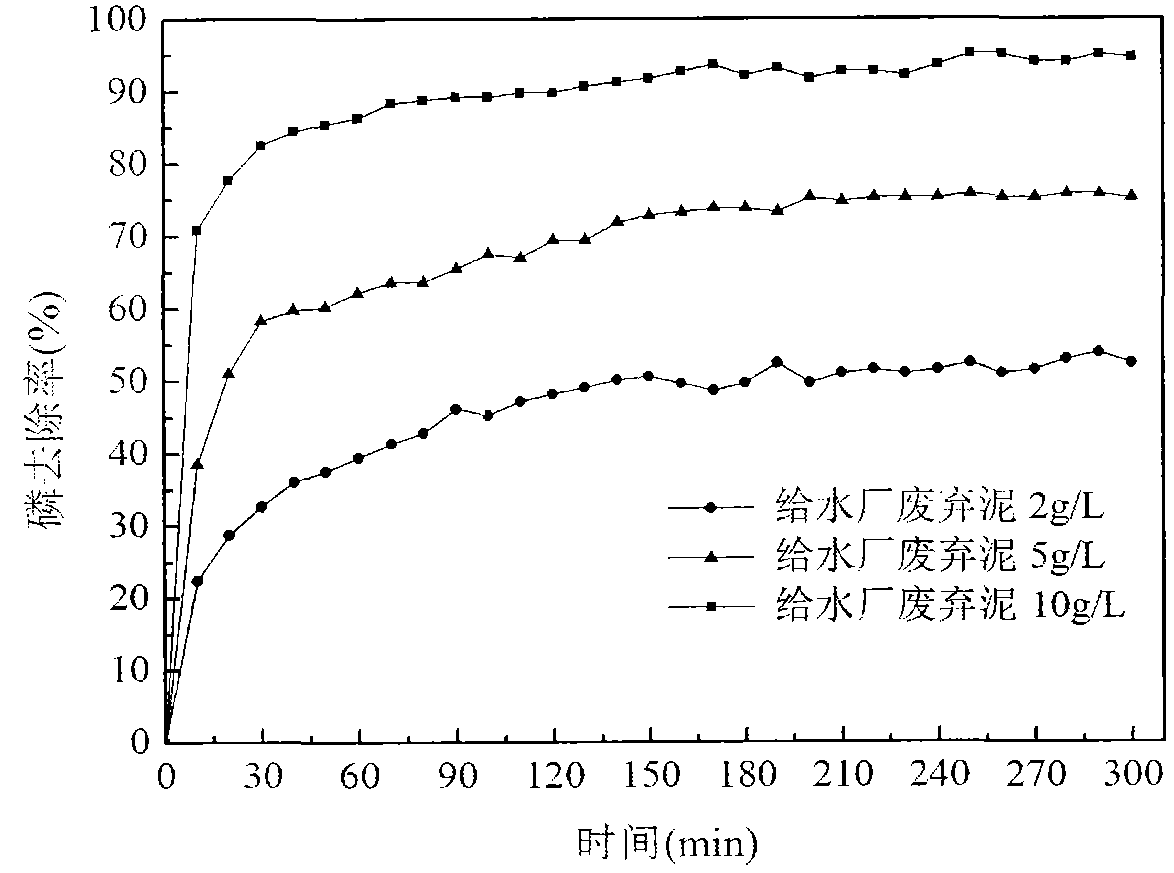Method for removing phosphorus from town sewage by recycling waste sludge of water supply plant
A technology for urban sewage and waste mud, applied in water/sludge/sewage treatment, water/sewage multi-stage treatment, adsorbed water/sewage treatment, etc., can solve the problem of removal rate of only 10-30%, and reduce disposal Cost, low cost, easy to obtain effects
- Summary
- Abstract
- Description
- Claims
- Application Information
AI Technical Summary
Problems solved by technology
Method used
Image
Examples
Embodiment 1
[0023] Using waste sludge from a water supply plant as raw material, the contents of iron and aluminum in the waste sludge are 133 and 98mg / L respectively, and the surface area is 56.11m 2 / g. The waste sludge from the water supply plant was naturally air-dried, crushed, ground and mixed to obtain a powder adsorbent with a particle size of 0.18 mm.
[0024] Urban sewage is taken from three sewage treatment plants with phosphorus concentrations of 5, 10 and 20 mg / L respectively.
[0025] according to figure 1 Set up three CSTR devices, choose urban sewage with a phosphorus concentration of 10mg / L as the influent water, add 5g / L of waste sludge to the water supply plant, adjust the influent flow rate to control the hydraulic retention time to 1, 2 and 3h respectively, and run Measure the phosphorus concentration in the water in the sedimentation zone every 10 minutes within 5 hours.
[0026] like figure 2 As shown, the phosphorus concentration in the effluent at all hydraul...
Embodiment 2
[0028] according to figure 1 Set up three CSTR devices, choose urban sewage with a phosphorus concentration of 10mg / L as influent water, control the residence time of 2h, add different amounts of waste sludge from water supply plants (2, 5, 10g / L), and run within 5h Measure the phosphorus concentration in the water in the sedimentation zone every 10 minutes.
[0029] like image 3 , the concentration of phosphorus in the effluent decreased rapidly at the beginning of all dosages, and then gradually reached equilibrium. The dosage increased from 2 to 10g / L, and the phosphorus removal rate increased from 52.6% to 94.7%. The results show that the phosphorus removal rate of the present invention can be significantly improved by increasing the dosage of waste sludge from water supply plants.
Embodiment 3
[0031] according to figure 1 Set up three CSTR devices, select urban sewage with a phosphorus concentration of 5, 10 and 20 mg / L as influent water, control the hydraulic retention time of the CSTR device to 2 hours, and add 5 g / L of waste sludge to the water plant. Within 5 hours of operation, every Measure the phosphorus concentration in the water in the sedimentation zone every 10 minutes.
[0032] like Figure 4 , the phosphorus concentration in the effluent at all phosphorus concentrations decreased rapidly at the beginning, and then gradually reached equilibrium. The influent phosphorus concentrations were 5, 10 and 20mg / L, and the phosphorus removal rates were 91%, 75% and 68%, respectively. Therefore, the present invention also has better removal efficiency for high-concentration urban sewage.
PUM
| Property | Measurement | Unit |
|---|---|---|
| Surface area | aaaaa | aaaaa |
| Particle size | aaaaa | aaaaa |
Abstract
Description
Claims
Application Information
 Login to View More
Login to View More - Generate Ideas
- Intellectual Property
- Life Sciences
- Materials
- Tech Scout
- Unparalleled Data Quality
- Higher Quality Content
- 60% Fewer Hallucinations
Browse by: Latest US Patents, China's latest patents, Technical Efficacy Thesaurus, Application Domain, Technology Topic, Popular Technical Reports.
© 2025 PatSnap. All rights reserved.Legal|Privacy policy|Modern Slavery Act Transparency Statement|Sitemap|About US| Contact US: help@patsnap.com



